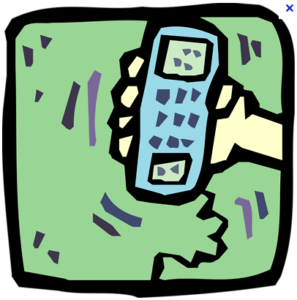 People look for reasons not to read your writing. When they see typos, grammatical errors and misspellings, they think you are sloppy, stupid or self-involved. Then they send the communication to the actual or virtual wastebasket — and the opportunity is lost.
People look for reasons not to read your writing. When they see typos, grammatical errors and misspellings, they think you are sloppy, stupid or self-involved. Then they send the communication to the actual or virtual wastebasket — and the opportunity is lost.
If we’re really pressed for time (and when aren’t we?) there is a tendency to give what we’ve written a quick look, hit the “print” or “send” button, and move on to the next task.
When our communication reaches its intended, these people glance at it and see an error. And that’s all they see. They miss our ideas because they’re focusing on what we’ve done wrong. And they can label us:
Sloppy: “She doesn’t think I’m important enough to take a second to proof or spell check this? I’m not going to bother reading it!”
Stupid: “Didn’t he know this is a run-on sentence? Where did he learn to write? I don’t have time to correct his mistakes!”
Self-involved: “Did she think I’d be so entranced with her idea that I wouldn’t mind she’s treating this memo like a text message? How unprofessional is that!”
Here are four ways to avoid making an “S” of yourself.
Trick #1: Always Spell Check. It’s true: spell check won’t catch everything: like “firs” for “first.” But it will get the most egregious items, and it’s fast. If you haven’t already set your email program to handle this automatically before it sends a document, do that right now!
Trick #2: Read it Out Loud. This slows you down, and you’re less likely to think you see a word because you expect to see it (which happens a lot when you read). Here’s a bonus. When you speak your text and hit something that’s awkward to say, it’s also awkward to read — so change it. You’ve just used proofing as a way to improve your text, which is time well spent.
Trick #3: Have Someone Else Read It. This is particularly important for proposals and communications that are supposed to leave readers impressed with you. When you’ve looked at something one too many times, you can’t see it anymore. Have someone you trust be your extra set of eyes.
Trick #4: Line Up Writing Resources in Advance. Unless you’re a particularly anal former English major (I’ll cop to this) you probably don’t have instant recall on grammar and usage rules. It pays to have several resources at hand — because if you have to search for them when you need them, you probably won’t take the time (and you’re likely to guess wrong instead).
- Have a style book for quick grammar, punctuation and usage rules. (I like The Associated Press Stylebook.)
- Have a more detailed business writing reference that shows examples of communications, and because sometimes you need to know the difference between an “em” dash and an “en” dash. (I like SkillPath’s Business Communications Style Guide.)
- Have a dictionary. Printed versions are fine, but make sure they’re not more than five years old (you’d be surprised at how rapidly English changes). Reputable online dictionaries generally stay up-to-date. (I like mirriamwebster.com.)
Remember: the presentation is just as important as the message. When people get out the “red pens in their minds,” they’re too busy feeling superior to see what you’re trying to say — or they already hit the “delete” key.
And when I make a mistake — which can happen despite my best efforts — nothing beats 1) taking responsibility, 2) a sincere apology, and 3) figuring out where the breakdown happened and how to prevent that next time.
